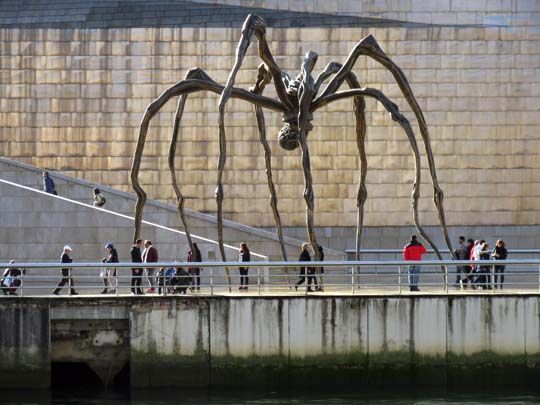Famous Sculptors
Sculpting is one of the most incredible forms of art in the world, and the great artists of the past have provided humanity with some incredible creations. In this article, we look at the a few of the most famous sculptures from around the world. The David of Donatello, a bronze statue created by the Italian Renaissance sculptor Donatello around 1440, is one of the most famous sculptures of all time. The sculpture is notable for being the first free-standing male nude since the ancient times.

Louise Bourgeois
Louise Bourgeois is one of the most famous sculptors of the 20th century. Born in Paris, she grew up helping her parents run a tapestry restoration company. During her childhood, her father had an affair with his English tutor, which deeply troubled her. She later married Robert Goldwater, a professional art historian. Eventually, they settled in New York City.
Louise Bourgeois’ spider sculptures have become a trademark of her work. The artist began experimenting with arachnid forms in 1947. Her most famous spider sculpture is the massive Maman, made of steel and resembles a mummy. The artist has said that spiders remind her of her mother.
Anish Kapoor
Anish Kapoor was an Indian artist and one of our famous sculptors. His work is characterized by bright colors and curved forms. It was inspired by his time in India, where he was inspired by the pigments sold outside temples. His first significant works, known as pigment pieces, were bright shapes on the ground covered with pure pigment.
Anish Kapoor was born in Bombay, India, and moved to London in the 1970s. He trained at the Chelsea School of Art and the Hornsey College of Art. After graduating, he travelled to India and rekindled his cultural memories. He then worked to combine his two cultures, merging East and West. In the 1980s, Kapoor began to experiment with scale and texture and began creating biomorphic sculptures.
Anish Kapoor was fascinated by the fragility of an artwork. He sought to create an installation that would engage the skyline of the city. His sculpture, Tall Tree and the Eye, is a beautiful example of this. It measures 33 feet in height and 66 feet in width. The work was installed in the courtyard of the Royal Academy of Art earlier this year.
Claes Oldenburg
Claes Oldenburg is a Swedish-born American Pop-art sculptor. He was born in New York and spent most of his life in the United States, Sweden, and Norway. He studied art and writing at Yale University and the School of the Art Institute of Chicago. He later established his own studio and gained U.S. citizenship in 1953.
Oldenburg was born on Jan. 28, 1929, in Stockholm, the son of a Swedish diplomat. In the 1940s, he moved with his family to Chicago, where he studied at Yale University. He also worked as a newspaper reporter. He graduated from Yale in 1950 and continued his studies at the Art Institute of Chicago. His first solo exhibition at the Judson Gallery in New York was held in 1959. one of the most famous sculptors.
Joseph Beuys
From Salvador Dali to Dali, from Gauguin to Beuys, we’ve explored some of the most iconic works of famous sculptors in history. But before we dive into the most famous works by these masters, let’s take a look at the lives of some of these artists.
Beuys was born in 1921 in Krefeld, north-west of Dusseldorf. He spent most of his childhood near the town of Cleves, where he attended the State Grammar School. In his studies, he showed an early interest in drawing and music, as well as history and science. Later, he served in the German Air Force, and his plane was shot down over the Crimea. Then, after the war, he returned to Kleve, and began making iconic works in his studio.
Beuys collaborated with several artists in the 1970s, including Richard Demarco and Marina Abramovic. He even held a public discussion called Jimmy Boyle Days at the Edinburgh Festival, which led to his famous hunger strike and legal action against the Scottish Justice system. The case was one of the first under the European Human Rights Act. The eight performance pieces should be understood as a series and should not be viewed as a single piece.
Henry Spencer Moore
Henry Moore was one of the most experimental famous sculptors during the 1930s and was inspired by Surrealism and Constructivism. He valued the abstract and was particularly drawn to biomorphic forms. In his early works, Moore pierced integral forms with holes, playing with negative and positive space. One of his most well-known works, Family Group, was created in the 1950s, and was commissioned by a secondary school in Stevenage.
Moore was born in Castleford, Yorkshire, and studied at the Royal College of Art in London. In the 1950s, he began receiving international commissions. He also continued to study drawing, printmaking, and textile design. He died in 1986 at the age of sixty-four. Moore is often credited with kicking off a British sculptural renaissance.
The experts at Phantom Lighting Systems not only offer the best in lighting for paintings and photography, but also for sculptures. If you’d like to learn more about how we can help you light sculptures, just give us a call – 1-800-863-1184
